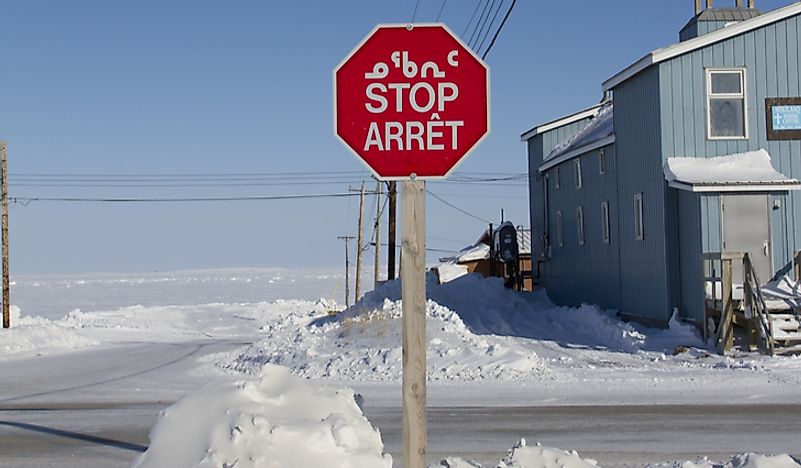What Language is Spoken in Canada?

Canada is the northernmost country in North America and has a population size of approximately 35.15 million. This population has been formed by a large number of indigenous groups, European colonizers, and recent immigrants. Together, these individuals have created a rich cultural environment in the country, with a diverse range of customs practiced and languages spoken.
Of these many languages, only French and English have been given official status by the federal government of Canada. All public services, legislative decisions, and court proceedings are held in both French and English. Approximately 56.9% of the population of Canada speaks English as a native language, while 21.3% speak French as a first language. Additionally, 85.6% of the population is able to communicate in English and 30.1% are able to speak and understand French. Throughout the provinces, English is the most commonly used language at home. Quebec and Nunavut are the exceptions to this statistic. In Quebec, nearly 80% of the population uses French at home, and in Nunavut nearly 53% of the population uses an indigenous language at home.
Indigenous Languages of Canada
Canada has a large indigenous population made up of a number of groups, each with its own language. These languages, many of which are in danger of becoming extinct, can be divided into 11 specific language groups. Less than 1% of the population of Canada claims an indigenous language as their mother tongue. The majority of these individuals reside in Nunavut. The most widely spoken indigenous languages in this country are: Ojibwe, Cree, and Inuktitut.
Ojibwe belongs to the Algonquian language family and has over 100,000 speakers. In Canada, it can be heard in Manitoba, Ontario, Saskatchewan, Alberta, Quebec, and in some areas of the US. It is considered the second most common native language of Canada.
Cree is spoken by approximately 120,000 individuals, making it the most common indigenous language in Canada. This Algonquian language can be heard throughout Canada, stretching from Labrador to the Northwest Territories. It is considered an official language by the provincial government of the Northwest Territories and by the regional government of Baie-James Territory in Quebec.
Inuktitut has around 32,000 native speakers across the northernmost areas of Canada. It is one of the official languages of the Nunavut province and considered one of the most important Inuit languages in this country. This term is also used to refer to the education of the Inuit culture, which occurs informally at home and in daily life.
Minority Languages of Canada
Canada is also home to a large immigrant population, which has conserved its native languages. Because of this, a large number of minority languages are used in Canada today. The most widely spoken of these languages are Spanish (758,280 speakers), Italian (660,945 speakers), and German (622,650 speakers). Other minority languages spoken in this country include: Cantonese (434,720), Punjabi (430,705), Arabic (365,085), Dutch (350,470), and Tagalog (324,120). At least 11 other minority languages are spoken here by populations of less than 300,000.
Linguistic Demographics of Canada
| Rank | Language | Population (%) |
|---|---|---|
| 1 | English | 64.78 |
| 2 | French | 20.61 |
| 3 | Other | 11.09 |











